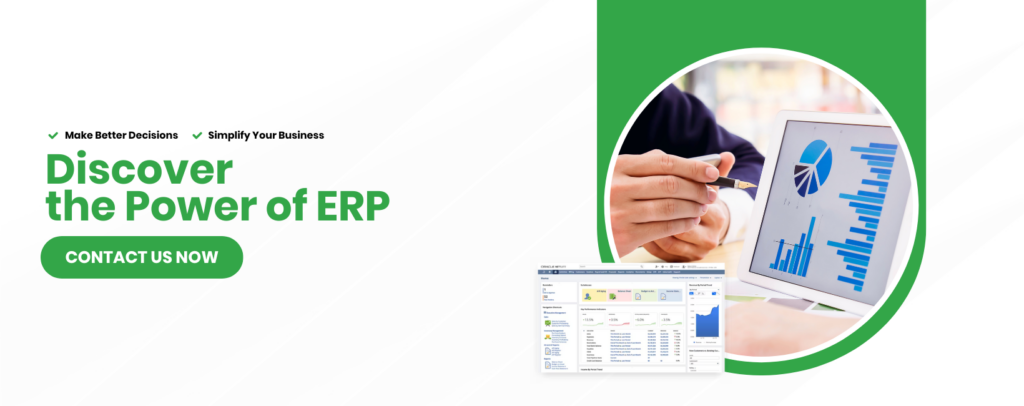NetSuite ERP Implementation
If you own a business and think your daily business operations could be more efficient, then maybe investing in enterprise resource planning (ERP) software could be the answer you are looking for.
NetSuite ERP software is a cloud-based management system. It helps businesses become more efficient by automating their core processes and providing real-time analytics and reporting on the business’s operating and financial performance.
The objectives of ERP implementation are to provide one singular interface for employees to manage the entire day-to-day operational process. It will cover processes such as accounting, inventory, and employee management. It provides companies with a clear insight into their business. They can see the various areas working well and locations that could be improved.
How to Implement ERP in an Organization
When you have decided that you would like to elevate your business and implement an ERP into your business, deciding on what you want from the NetSuite ERP implementation is the next step.
While there is rarely a perfect software installation, goVirtualOffice has nearly twenty years of experience implementing over 700+ NetSuite systems. They would be delighted to help your business take the first step to greatness.
During the implementation process, there will be a kick-off meeting where all the parameters for the software, budgets, and timelines are finalized. The software is then customized based on the business’ request. goVirtualOffice will then prep the software to go live, where it is tested, and several training events occur. The final step involves flipping the switch and turning on your brand-new software system.
goVirtualOffice makes the design and implementation of the NetSuite ERP system as straightforward as they can, as they understand that many businesses are often stretched thin and having a significant upheaval is a turn-off.
Implementing an ERP system will increase your customer base and profits while streamlining all your processes. It is the best way to take your business up a notch.
Implementation Phases
While every ERP implementation life cycle will give a different set of criteria and checklists, several implementation phases are universal for every ERP implementation.
11 Phases of ERP Implementation
1. Establish the problems within the business and the target they have for the future.
Identifying the problems within the business and the target they have for the future.
2. Defining the scope
A clear objective for this installation needs to be determined, as this will stop the implementation of the ERP system from being over budget or beyond the timelines set out initially.
3. Brainstorming
Management should evaluate several different software options before deciding on the brand of ERP software they will purchase. This will ensure they get the best features and software for the best price.
4. Creating an ERP Implementation Plan
A dedicated manager and team should be assigned to the project. The requirements of the new ERP can be decided, and the first set of testing can begin. If this is successful, the company's staff can be trained on the new system.
5. Data Migration
Only necessary data should be moved to the ERP software system.
6. Verification
The most important step of ERP implementation is verification. The infrastructure where the ERP software will run must be customizable and have the ability to be expanded.
7. Customization
This may or may not be necessary; it depends on the client. Also, previously decided customization may be resolved or new ones added in.
8. Change Management
The ERP software changes hands from the software team to the client's employees.
9. Technology and Knowledge transfer
Ensuring proper transfer of technology and knowledge gives this implementation a bigger chance of success. Effective training will help this process also.
10. Project Management and Testing
Final testing ensures that all aspects of the ERP software are working optimally.
11. Time to go Live - which is the most critical phase in ERP implementation.
It is officially used by employees on actual company processes.
ERP Implementation Methodology
No ERP system implementation methodology is the same, as every businesses will want different features, automation, and parameters tracked. Every ERP implementation step will have its specifics and its issues.
As technology has developed and more people are using ERP systems, the methodology in which these systems are installed has changed. There are two primary ERP implementation methodologies that most installation companies will use: the “Waterfall Methodology” and the “Agile Methodology.”
The Waterfall Methodology
This method could be referred to as the traditional or historical method used to implement ERP systems. Like a waterfall, each step in this method flows seamlessly into the next. ERP implementation can often be unpredictable, so this methodology insists that specific actions occur in every software implementation.
The stages of ERP evolution using the Waterfall methodology may look something like this:
- Planning
- Design
- Development
- Testing
- Go-live/Deployment
- Support/Maintenance
The Agile Methodology
These new ERP implementation methodologies are a lot more flexible as they realize the challenge of implementing and monitoring technology that is constantly changing. It deals with the implementation process in sprints or short intervals rather than in a linear way.
Testing is completed at the end of each sprint and adjusted if needed. This is a more efficient way as if any problems occur, they will be caught almost immediately instead of at the end of the installation process.
Both these methods are still used today as they fit different environments better, as there is no “one size fits all” when it comes to ERP implementation steps.
Increase Your Customer Base and Profits While Streamlining All Your Processes
Get the best way to take your business up a notch!
ERP Implementation Challenges
Due to ERP implementation being unpredictable, companies could face many challenges and risks when taking on a massive project like this. When encountering challenges, the best thing to do is to discuss ERP problems and solutions so that all angles and avenues have been discussed before deciding on an action plan.
What is the Biggest Challenge with ERP systems?
The biggest challenge when implementing an ERP system is getting long-standing employees to change their work habits to work with the new software. Employees sometimes do not like change as it initially may involve more work or slow their work down. Strong leadership from the top and mid-level management is needed to implement this change correctly.
Here are some of the most common ERP implementation challenges and risks ERP implementation teams have encountered.
ERP Implementation Challenges
- Project management on these projects can be challenging as every phase brings a new set of tasks to be completed by both the client’s employees and the ERP installation company. Both sets of people are trying to juggle their responsibilities and responsibilities pertaining to the ERP implementation.
- Data integration is an essential process of ERP installation, but it can be a prolonged process as it can take a long time to find the necessary data.
- Going over the allocated budget can be a challenge for ERP software implementation teams. Most companies underestimate the amount of work that goes into implementing systems like these and, unfortunately, underestimate the budget.
ERP Implementation Data Risks
- Scope Creep happens when a business keeps adding more features to the ERP system, thus slowing down the entire installation process.
- Data quality can also be a risk as some companies have been operating for a long time, and their data is in various formats and could also contain obsolete information.
Successful ERP Implementation
To ensure a successful ERP implementation, here are the best practices from the experts in successful ERP implementation companies:
- A dedicated ERP team: When assembling a team, consider who will be an asset to this installation. You will need capable individuals with the proper skill set, including communication skills, discipline, and the ability to work within multiple teams.
- Define the Key Requirements for an Installation: Everyone on your team should clearly understand the implementation goals. Analyzing current workflows and processes will give your team a greater understanding of this process’s primary goals.
- Project Management Plan: A comprehensive project management plan is vital. The top management of the client’s company should be on board with the project management plan to ensure it stays on time.
- Data Migration Plan: A detailed document for transferring the critical data needed for the new ERP system. Having this plan, it will ensure that no data is lost or corrupted.
While there are many ERP challenges and benefits to implementing a software system like NetSuite, overall, if you have an excellent company like goVirtualOffice, they should make the process as streamlined as possible.
ERP Implementation Checklist
Before you start the software implementation, you must confirm you have all the items to install the entire system in the allocated time frame successfully. Not having specific equipment or data could slow the process, making the project late.
To ensure that this no delays will happen, here is a basic ERP implementation checklist:
- Before the installation begins, it is vital to identify the software you are using and the total cost.
- Set a timeline for each category; if there is no definite date, an estimated one will suffice.
- Analyze the ERP implementation documentation and pre-empt any extra equipment, documentation, and/or man-hours.
- Eliminate anything unnecessary from the implementation plan; it will streamline the installation process.
- Have an expected outcome by briefing every person of interest on what to expect and how to expect it.
- Any risks and controls in the implementation of ERP systems can be resolved during the installation phase; it is where any problems will be resolved before the system goes live.
- Define the methods to most effectively train the employees on how to use this new software.
goVirtualOffice has a comprehensive guide on ERP implementation that includes an ERP implementation checklist (excel) and an ERP implementation plan template (excel). If you want more information on NetSuite ERP implementation, contact goVirtualOffice today.

If you found the above content interesting, be sure to watch our video on:
Are you evaluating an ERP? Are you looking for advice on how to make sure you have a successful implementation? Stay tuned while we answer the top questions about ERP implementations and how to make them a success.

)





